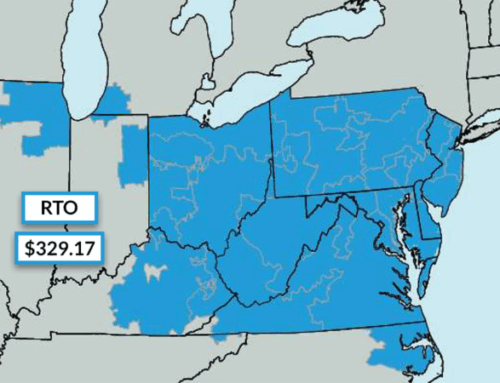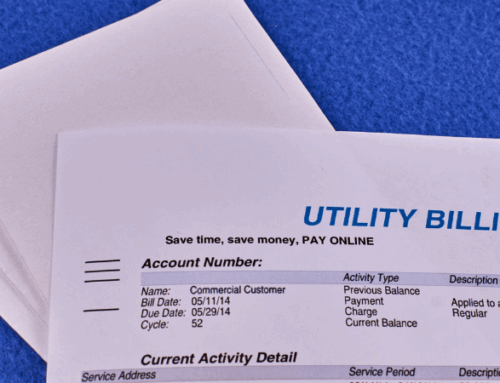The transportation of natural gas is a critical component of the energy supply chain in the United States. Because natural gas is so critical to our energy infrastructure, the safe and reliable transportation of this commodity ensures that energy supply is reliable and prices are stable. Central to this process is the extensive network of gas pipelines that crisscross the country, transporting natural gas from drilling production sites to storage facilities to utilities and end-users. Understanding the intricacies of this pipeline network, including its structure, impact on market prices, and ongoing modernization efforts, is essential for appreciating how natural gas maintains its pivotal role in the energy landscape. Let’s explore the natural gas pipeline network in more detail.
What Is The Gas Pipeline Network?
The natural gas pipeline network is a vast infrastructure system designed for the efficient and safe transportation of natural gas from production areas to consumers. It’s comprised of various interconnected pipelines, compressor stations, and monitoring systems that ensure the continuous flow of gas across vast distances.
These pipelines are designed to transport gas under a certain high pressure. In fact, gas will only flow across the network if the pipeline pressure is at a certain level. The pipelines vary in diameter, with transmission pipelines typically being larger to handle high volumes over long distances, while smaller distribution lines deliver gas directly to homes and businesses.
The natural gas pipeline network can be broken down into three main components:
- Gathering Systems: These are pipelines that transport natural gas from production sites, such as drilling wells, to processing facilities. At the processing facilities, the gas is refined or compressed and fed into the next section of the pipeline.
- Transmission Pipelines: After processing, natural gas travels through large-diameter pipelines across states and regions. These pipelines operate under high pressure and are the backbone of the gas transportation system. They take gas to utility companies across the country, directly to large natural gas power plants, and also feed gas into natural gas storage facilities.
- Distribution Networks: Once the natural gas reaches regional hubs and utility companies, it is distributed via smaller pipelines to end-users, including residential, commercial, and industrial consumers.
Here is what the natural gas pipeline network looks like in the United States:

Interstate And Intrastate Pipelines
Natural gas pipelines are categorized as either interstate or intrastate based on their geographic scope. Interstate pipelines cross state boundaries and are regulated by local states and federal agencies like the Federal Energy Regulatory Commission (FERC). These pipelines are critical for stabilizing the nationwide energy supply, as they transport gas from production-rich areas to consumption-heavy regions. For example, one might transport natural gas in the Winter from the Henry Hub in Louisiana along the Transco 6-NY pipeline to New York City to meet the heating needs of Northeast residents. This regional demand dynamic can often create a large gap in prices between two parts of the country and is known as natural gas basis cost.
Intrastate pipelines, on the other hand, operate within a single state and are subject to state regulations only. These pipelines play a key role in maintaining the local supply and addressing state-specific energy needs. The coordination between these two types of pipelines is essential for a seamless natural gas transportation network, but can often get complex due to the various oversight regulatory bodies.
Natural Gas Pipeline Operators
The natural gas pipeline network in the U.S. is operated by a diverse array of companies, ranging from large interstate operators to smaller intrastate companies. Understanding the different types of pipeline operators, their ownership levels, the rates and tariffs they charge, and the operation of compressor stations provides a comprehensive view of the natural gas transportation system. Let’s explore the various gas pipeline participants in more detail below.
Gas Pipeline Ownership Levels
Pipeline ownership in the U.S. is a mix of private and public entities. Major pipeline companies often own extensive networks of interstate pipelines, connecting multiple states and major supply regions to areas of high demand. Some of the largest pipeline operators include Kinder Morgan, Enbridge, and Williams Companies, which control thousands of miles of pipelines.
In addition to these large companies, there are numerous smaller companies that own and operate natural gas pipelines. These companies typically focus on serving regional markets within a single state, operating intrastate pipelines. The ownership structure can also include joint ventures and partnerships, where multiple stakeholders invest in and manage pipeline assets collectively.
Pipeline Rates And Tariffs
Pipeline operators charge rates and tariffs for the transportation of natural gas over their pipelines. These rates are regulated to ensure fair pricing. For interstate pipelines, FERC oversees and approves rate tariffs. These rates are designed to cover the costs of operating and maintaining the pipelines, as well as providing a return on investment for the pipeline owners.
Rates are generally determined based on the distance the gas travels and the volume transported. Tariffs can also include charges for additional services such as compression, storage, and balancing. Interstate pipelines charge two types of fees to transport natural gas:
- Reservation fee: A fee to ‘reserve’ capacity on a particular pipeline
- Commodity fee: A certain rate per unit of gas transported
Intrastate pipeline rates, on the other hand, are regulated by state public utility commissions and public service commissions. Rates in individual states can vary significantly based on regional factors and state regulations.
Gas Compressor Stations
Compressor stations are critical components of the natural gas pipeline network. They function to maintain and boost the pressure of natural gas as it travels through the pipeline network, ensuring a steady flow from production areas to end-users.
Natural gas is typically transported under high pressure, and as it moves through the pipeline, it loses pressure due to friction and distance. Compressor stations, strategically located along the pipeline, use large engines or turbines to compress the gas, increasing its pressure and enabling it to continue its journey.
These stations are essential for long-distance transportation, particularly in interstate pipelines where gas must travel hundreds or thousands of miles. Compressor stations also play a role in managing the flow of gas, allowing pipeline operators to adjust pressures to meet varying demand levels.
Impact On Market And Prices
The efficiency and capacity of the natural gas pipeline network can directly impact market prices. Pipeline constraints or bottlenecks can lead to regional price disparities and volatility. For instance, during peak demand periods in certain regions, such as the Northeast U.S. in the winter, limited pipeline capacity can cause supply shortages and price spikes.
On the flip side, natural gas storage facilities connected to the pipeline network can help with supply and demand management. During these periods of high demand, stored gas can be quickly injected into the network to prevent shortages, helping to stabilize prices.
Modernizing Gas Pipeline Infrastructure
Modernizing the natural gas pipeline infrastructure is paramount to enhancing energy security, market efficiency, and reliability. Aging pipelines pose risks of leaks and failures, which can have significant economic and environmental impacts. Investments in new pipelines, real-time monitoring systems, automated controls, and other energy technologies are essential for modernizing the current natural gas pipeline network.
Moreover, upgrading the pipeline infrastructure supports the integration of renewable natural gas and other clean energy sources. This investment is critical as the energy sector moves towards sustainability, reduces carbon emissions, and experiences an energy transition. Modernization efforts ensure that the natural gas transportation network remains resilient and capable of meeting future energy demands.
Want To Learn More About Our Natural Gas Infrastructure?
The natural gas transportation network, with its extensive system of pipelines and participants, is fundamental to delivering energy from production sites to consumers. Understanding the components of this network, from interstate and intrastate pipelines to storage facilities, is key to appreciating its role in maintaining market stability and energy security. As a leading natural gas market participant, we offer natural gas advisory services to the largest energy users in the country. Contact our experienced gas team today to learn more about how natural gas pipeline constraints can be impacting your bottom line, and how to mitigate natural gas price risk.
Bonus content: For more detailed information on natural gas markets, including insights into rates and tariffs and price trends, you can explore our other articles such as energy prices forecast and market trends.



